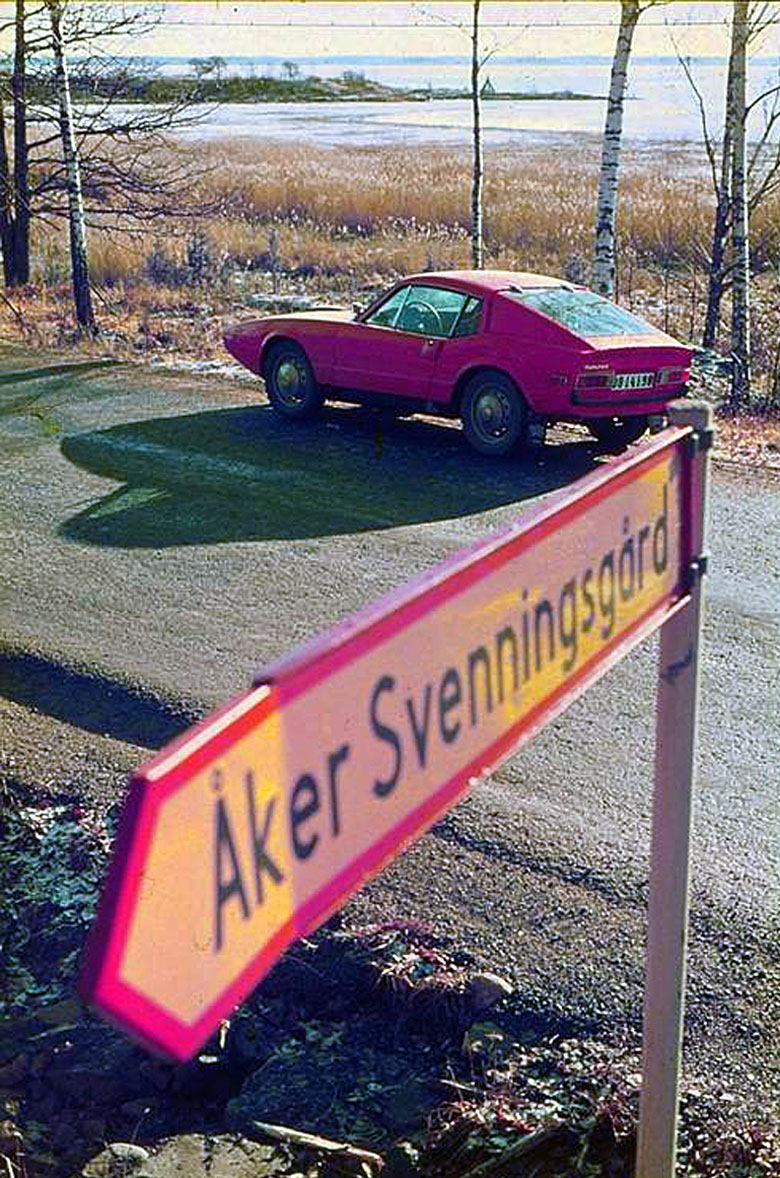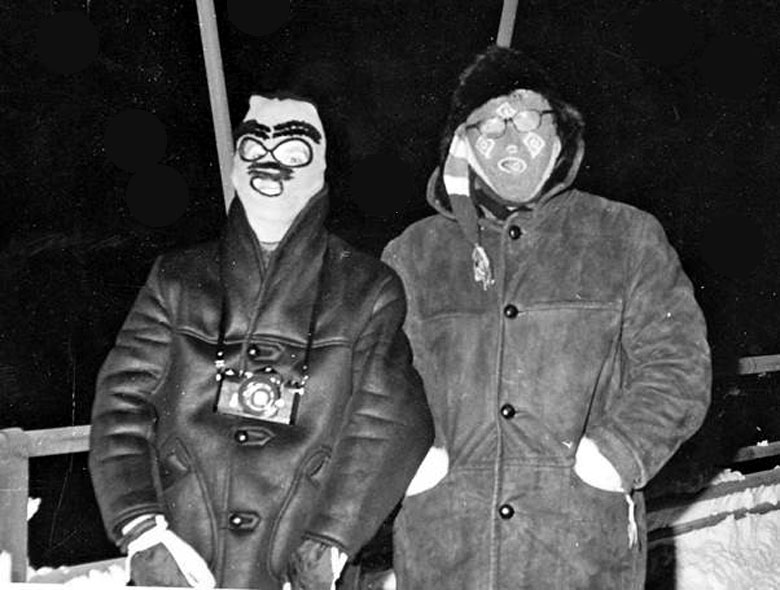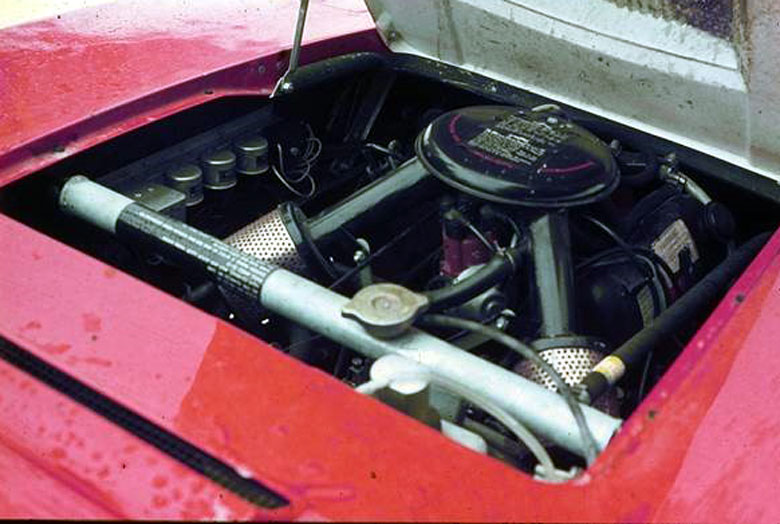Story and photos by Graham Gauld
It was back in 1966, having visited and written about the famous Monte Carlo Rally for a few years, that I decided I would try the Swedish Rally. This was another World Rally Championship event held in February approximately 1677 miles North of Monte Carlo and in the middle of the Swedish region of Värmland.
After a few telephone calls to Paris, I finally managed to persuade our old friend Henry Manney III to come North to Sweden for an adventure. He agreed it would certainly be something different. We met in Gothenburg airport where Volvo had delivered a Volvo Amazon for us to use on the event and equipped with fully studded tires.
I will not bore you with the details of that trip – such as when Henry and I discovered that Canon cameras in those days were not built for the photos we tried to take at about 3.00 am on a windy night when the cold winds directly from Russia dropped the temperature to minus 44 Fahrenheit.
Now I tell you, that was cold and when we hit the button to take a picture it made a lazy whirring noise and we ended up with a camera that took a 2 second exposure!
Just to rub salt into our wounds, our Swedish photographer pal, standing beside us, was laughing as his Leica was giving him no problems.
So you get the picture; I loved the Swedish rally and visited it many times which, is why I wanted to talk to you about the Saab Sonett III that I drove on one of my winter visits when the weather was slightly warmer.
The Saab Company (Svenska Aeroplan Aktiebolaget) was originally created in 1937 to build aeroplanes but in 1945 they moved into car production at their Linköping factory.
Wikipedia will tell you it was Sweden’s first production car so don’t tell Jons Cederholm who produced his Cederholm steamer in 1894. Gustaf Erikson went one better with a water cooled 2 cylinder two stroke engined car followed by Scania (1902), Vabis (1910), Scania-Vabis (1919), Thulin ( 1924) and Volvo (1927); they all had production cars in Sweden long before Saab.
Saab’s first car was the 92, powered by a twin-cylinder two-stroke engine originally designed by DKW. It was no surprise when Saab switched to the more powerful 3 cylinder two-stroke DKW engine from the Sonderklasse in 1955, and the famous rally winner of the time was created, a car that made Saab’s name worldwide. Don’t forget that the first car Jim Clark raced was a 3 cylinder 2 stroke DKW Sonderklasse.
A few years later, when Ford Germany dropped the idea of a V4 engine for a possible Ford Cardinal, Saab bought the rights to this engine and the Saab V4 was on its way.
As for the Sonett, the first Sonett was given the type no 84 on the suggestion of engineer Rolfe Melde who had set up his own little shop in a barn near Trollhättan, from of which six prototypes were made. The car had a glass fiber body that looked like an upturned bathtub as it was molded in one piece. It was powered by the 3 cylinder two-stroke former DKW engine.
Throughout the relatively short lifetime of the Saab Sonett, it was always a car that Saab was never quite sure about. After all it was Swedish and in some respects, it was over-engineered for the low-cost sports car market it appeared to be aimed for.
By the time I was able to actually see my first Sonett in 1973, it had gone through a number of changes. The glass fiber body had now been styled by Sergio Coggiola in Turin and what he came up with was an edgy stump-tailed GT coupe with a comfortable but tight cockpit and what looked like a good specification and power to weight ratio.
Saab had supplied me with one to cover the Swedish rally that year and on the way from Gothenburg to Karlstad I got used to it and I must say out on the open road it is a great fun car.
Thanks to its light weight and the torque of the engine it had a bit of get up and go about it and because of its front wheel drive, even on an ice-track on a frozen lake its handling was quite remarkable.
In the towns it was not so comfortable but it clearly had a market, which is why Saab began exporting the Sonett III to the USA. In some ways it was too late, the oil crisis in 1974 was no help and, at the end of the day, the price was a bit too high.
Having said that I never understood how the Triumph Spitfire sold so well when it was very much a low-cost sports car and not very well built, but the Saab was properly finished and well-built but at the end of the day it was probably too expensive for what it represented.
However, despite all that and fifty years on, I noted the other day a perfectly standard Saab Sonett III for sale in Germany for US $44,000 and a full rally prepared Sonett III in Belgium for US $61,300 so clearly the Sonett is now seen as much better value than it appeared fifty years ago when it was launched.



Interesting article. I live in Norway and am very familiar with Sweden, the Swedish Rally and SAAB vehicles. Fun read.
Love the on location portrait. The Wikipedia reference to SAAB being the first Swedish production car does not exist on the current webpage for the former manufacturer.
I would point out that the Ford V4 as used by Saab was originally designed in the US, Ford actually fitted the engines to early Saabs as test mules (and shortly afterwards to the original mid engined Mustang prototype), the engine was used in production by Ford Germany initially in the front wheel drive 12M and subsequently many other models through till the early 70s and supplied during this period to Saab to replace their own 2 stroke.
Graham – Always so interesting! One of the V4 what-if’s is mentioned in Bjorn-Eric Lindh’s book “Saab – The First 40 Years” where he says that during the efforts to move to a V4 engine, unofficial approaches to Lancia were rebuffed. However several early Saab 96s were equipped with the Appia V4 engine. I had a V4 Saab 96 for a while and dreamed of fitting a Fulvia engine into it……It was a nice car anyway
Two of my all-time favorites in one article. Be still my heart! As always, Graham thank you for an interesting story about a more remote but just as important subject as any grand prix. More, More ….
you could really improve the american market sonnet iii by getting a 2-barrel weber and everything necessary to swap it for the puny 1-throat stock carb, from your local ford industrial engine parts dealer. in the mid-70s it was about $100. more power AND better mileage too!
Toly you never cease to amaze me. No doubt you are now going to corner the used SAAB Sonnett III market. Good luck pal. GG